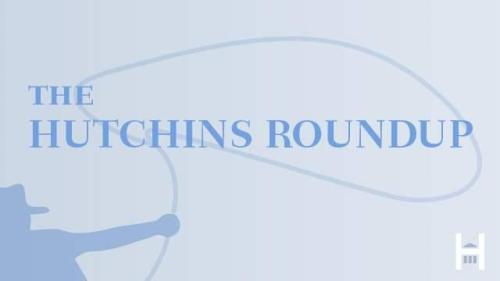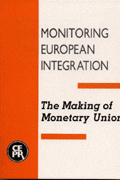Studies in this week’s Hutchins Roundup find that the official CPI might be understating inflation, expectations of lower demand are driving small businesses to delay reopening, and more.
Want to receive the Hutchins Roundup as an email? Sign up here to get it in your inbox every Thursday.
Credit and asset markets can predict economic crises
Are economic crises predictable? Robin Greenwood, Samuel Hanson, and Andrei Shleifer from Harvard and Jakob Ahm Sorensen from the Copenhagen Business School argue that they can be predicted with data on credit and assets. The authors build a dataset that includes financial crisis indicators, household and nonfinancial business credit growth, home prices, and equity prices for 42 countries between 1950 and 2016. Using these data, they identify periods of credit-market “overheating” when credit growth and asset price growth are both high. The authors find that when household or non-financial business credit markets overheat, the probability of a financial crisis over the next three years is roughly 40%. Despite the modest rate of false positives from this predictive mechanism, the authors argue that crises are sufficiently predictable to warrant early action from central banks when warning indicators arise. Moreover, given that financial crises can lead to a permanent loss of real output, the authors advocate that precautionary macro-financial policies, such as tightening monetary policy or raising bank capital requirements, should be used much more frequently.
A higher inflation target creates less monetary space than policymakers desire
Persistently low inflation leads to lower nominal interest rates and limits the monetary space—how much nominal rates can be cut—that central bankers have to fight a recession. Some economists argue that a higher inflation target could create more monetary space by increasing inflation, and thus nominal interest rates. Jean-Paul L’Huillier of Brandeis and Raphael Schoenle of the Federal Reserve Bank of Cleveland find that monetary space does not respond one-for-one to an increase in the inflation target: a 2-percentage point increase in the inflation target would only generate 1.28-percentage points of monetary space; to get the intended 2 percentage points of space, the inflation target would need to increase about 3 percentage points. Firms adjust prices more frequently when inflation is higher, the authors reason, therefore monetary policy is less effective, and central banks must respond more aggressively. As a result, the optimal inflation target needs to be approximately 1 percentage point higher to account for the loss of potency.
What correlates with COVID-19 death rates?
Christopher R. Knittel and Bora Ozaltun from MIT correlate county-level COVID-19 death rates from April 4 to May 27, 2020 with county-level socio-economic variables, health variables, modes of commuting, and climate and pollution patterns. They find that counties with a higher share of African American residents have higher death rates. Importantly, this is not because they have higher rates of uninsurance, poverty, or diabetes; the model controls for these variables. Therefore, the authors conclude that other possibilities should be examined, such as systemic racism that impacts African Americans’ quality of insurance, hospitals, and healthcare. Contrary to previous work, the authors do not find a correlation between exposure to air pollution and death rates. Neither are obesity rates, ICU beds per capita, or poverty rates correlated with death rates. However, the authors do find that patients who commute to work are more likely to die from the virus relative to those who telecommute, especially those who rely on public transportation.
Chart of the week: Global public debt is expected to exceed the post-World War II peak
Quote of the week
“In terms of the flow of information over the summer, it will be unusually difficult for several reasons to extract signals about the medium-term prospects for the economy and the inflation path,” says Philip Lane, Member of the Executive Board of the European Central Bank.
“First, while the unlocking of the economy is likely to be associated with a substantial improvement in a variety of near-term growth indicators, the scale of the contraction has been so large that overall activity will remain far below the pre-crisis level and the scale of the initial rebound in these weeks will not necessarily be a good guide to the speed and robustness of the recovery. Second, at the same time, it is plausible that it will take a sustained period of improving economic and public health conditions before the confidence channel that is so important in determining the expenditure plans of households and firms is fully operative. Third, projections about the speed of the recovery also depend on the design and timing of fiscal stimulus programmes. In particular, the outcome of negotiations about the EU recovery fund will be an important factor in determining the future path for the euro area economy.”














Commentary
Hutchins Roundup: Predicting financial crises, targeting inflation, and more
June 25, 2020